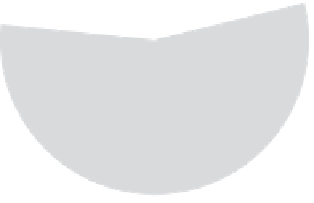Agriculture Reference
In-Depth Information
(a)
Production volumes of the different
groups of citrus (2008)
(b)
Trade volumes of the different
groups of citrus (2007)
Citrus fruit, nes
Grapefruit (inc. pomelos)
Lemons and limes
Oranges
Tangerines, mandarins, clem.
Citrus fruit, nes
Grapefruit (inc. pomelos)
Lemons and limes
Oranges
Tangerines, mandarins, clem.
Figure 4.2
Global citrus production (A) and trade volumes (B) for the different categories.
Table 4.2
Most Important Countries That Trade in Citrus Fruit Reflecting Volumes and Types Traded.
Country
Tangerine
Other
Grapefruit
Lemons
Oranges
Total
Spain
1 652 428
3535
2
447 618
1 414 220
3 517 803
South Africa
106 447
1676
68
116 346
1 002 618
1 227 155
Turkey
257 935
11
378 998
286 240
175 525
1 098 709
Argentina
98 625
44
28 730
351 767
196 925
676 091
China
399 986
5377
84 675
3534
76 788
570 360
United States of America
23 036
2050
0
147 311
341 914
514 311
Mexico
5039
5536
11 674
462 868
28 193
513 310
Morocco
243 983
336
1387
2551
253 201
501 458
Netherlands
95 689
7225
85 964
83 137
221 552
493 567
Egypt
5403
91
7627
9751
271 551
294 423
the prevention of product contamination. In this chapter,
an overview of fruit physiology, physiological disorders,
post-harvest practices, and the major post-harvest citrus
diseases are provided. In addition, disease control strate-
gies and cold chain management practices are discussed
as related to supply chain systems for commercial citrus
production. Citrus pests are not included as part of this
review.
PHYSIOLOGY OF CITRUS FRUITS
Basic fruit morphology
Citrus fruit are hesperidium berries that differ from other
true berries such as tomato and grape, in having a leath-
ery peel which surrounds the edible portion of the fruit.
Citrus are nonclimacteric fruit that lack both a ripening
cycle and a well-defined abscission period. Citrus fruit
















































